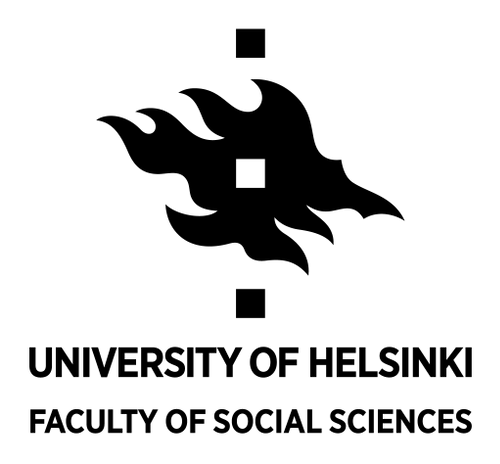By Jenny Tilsen
On the days leading up to the summer solstice, The Centre for the Social Study of Microbes (CSSM) hosted its second annual three-day long summer school in Helsinki, Finland. The PhD school included doctoral students at various stages of our studies, along with artists, scientists, and social science researchers. While we all came from different disciplinary backgrounds, what brought us together was a shared interest in microbes

The summer school kicked off with an introduction from the director of CSSM, Dr. Salla Sariola, who presented an overview of current microbial scholarship in different fields, as well as challenged us to think about the complexities of human and microbial relationships. After the introduction, we presented flash talks of our research. Students’ presented on topics ranging antimicrobial resistance and social inequalities, meditating with microbes, ethnographic encounters of fermentation practices in Mongolia, studies of architectural practices of using fungal building biomaterials, and microbial bioremediation practices. I arrived with an article draft to share about the social construction of microbes in science fiction. We were an interdisciplinary group – supporting diverse perspectives and collaborative learning and teaching that took place.
Beginning that afternoon, we workshopped our paper in small groups, alongside some of our fellow microbial minded colleagues. We had the chance to play the role of the discussant, the role of a peer reviewer, and the role of the author receiving feedback of our own work. Our task was to read to understand each other’s work and to be “generous and generative” with our feedback. Considering, a lot of us were in different fields, this was an opportunity to read across disciplines, engage with other scholarship that might be outside of our area of study.
Learning in the Microbial Middles

The Know Your Microbes workshop took place on day two and three. In this workshop, we met with different students and facilitators. This mixing of people, ideas, methods, and tools aided in new explorations of knowing microbes in our work. In my group, we collaged, painted, and drew out what our research visually looks like. From here, we asked the question: “What does it mean to know/study microbes?” We focused on the idea that we study microbes by what they do. Through our artistic tinkering, we maintained a shared understanding, that we only know a fragment of what microbes do. What we do know about what microbes do is, microbes metabolize, communicate, respond, leak, reproduce, sleep, and transform. Microbes smell, they create, they colonize, and they are pirates. Microbes do so much and infinitely more than what I am describing here.

Somewhere in the microbial middle of this Deluzian wandering (1987), we found ourselves talking of the perspectives humans’ take up when studying microbes. We considered that microbes are often studied from above –somebody looking into a microscope, listening or looking at traces of microbes in the bubbles of a jar of fermented food, or picking up a handful of soil. One of my group mates and colleagues in the workshop described this as an “ego eye view,” a creative linguistic reinterpretation of “eagle eye view.” This alliteration wasn’t far from the idea of the ego eye— a singular eye peering into a microscope to study microbes. By looking at microbes differently, we wondered if there are opportunities to ask different questions or begin again from a divergent view of how we interact with microbes. Each group in the workshop presented their visual descriptions of their research. In our participatory performance presentation, we invited others to think and look at microbes from below, in the middle, at an angle, or from a distance with us to consider other perspectives of how we situate and study alongside microbes.
Collective Learning

One of the actions that we study microbes doing, is gathering. In biofilm formation, microbes stick to surfaces to coordinate behavior and share resources (Yao et al., 2022). On the other hand, in quorum sensing microbes use “cell to cell” communication to collectively communicate (William, 2007). In much the same way, the summer school cultivated a sense of collective learning, where we gathered to learn with each other, share resources, and deepen our deepen our understanding of microbes. We built shared knowledge. The sites of collective learning extended beyond lecture halls and classrooms to sharing food on the steps of the University of Helsinki, visiting the sauna on the island of Lonna and swimming in the Baltic Sea, singing together at a karaoke bar, going to art galleries, and on taking walks with each other.
From all of these experiences, I can say we know a little bit more about microbes, and we know each other because of the microbes. Lastly, thank you to all of the organizers and facilitators who placed a lot of care into creating a thoughtful and imaginative learning experience at the Centre for Social Study of Microbes.
References
Deleuze, Gilles. 1987. “A Thousand Plateaus: Capitalism and Schizophrenia.” U of Minnesota P.
Williams, P. (2007). Quorum sensing, communication and cross-kingdom signaling in the bacterial world.
Microbiology, 153(12), 3923-3938.
Yao, S., Hao, L., Zhou, R., Jin, Y., Huang, J., & Wu, C. (2022). Multispecies biofilms in fermentation:
Biofilm formation, microbial interactions, and communication. Comprehensive reviews in food science and food safety, 21(4), 3346-3375.


